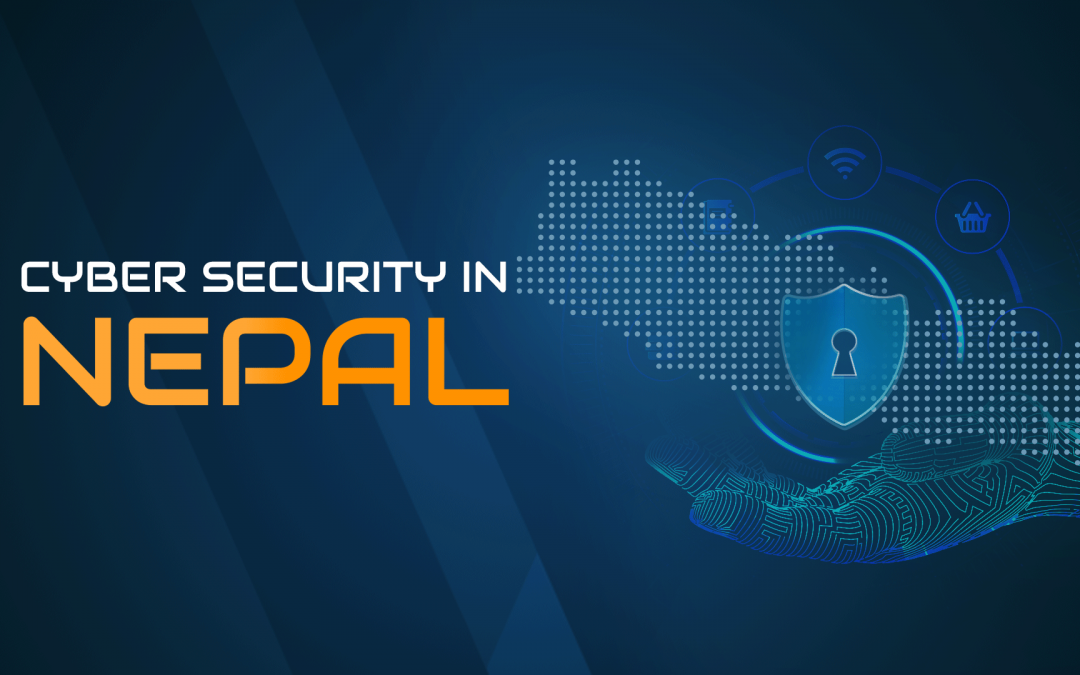In today’s interconnected world, where information flows seamlessly across borders and technology permeates every aspect of life, cybersecurity serves as an essential shield against emerging threats. Nestled in the heart of South Asia, Nepal is rapidly embracing digital transformation, ushering in unprecedented opportunities. However, progress also brings challenges. This blog explores the critical importance of cybersecurity in Nepal, delves into the major threats it faces, and sheds light on the diverse range of cybersecurity measures available to protect the nation’s digital landscape.
The Crucial Role of Cybersecurity in Nepal
Nepal is wholeheartedly embracing the digital age, evident in the growing adoption of online services, e-commerce, and digital communication. While this digital evolution offers convenience and efficiency, it also exposes new threats. Consequently, safeguarding digital assets has become an integral part of national security.
Major Threats in Nepal’s Cybersecurity Landscape
Nepal faces a spectrum of cybersecurity threats, including:
- Ransomware Attacks: In recent years, Nepal has witnessed a surge in ransomware attacks. These malicious programs lock users out of their systems, demanding ransoms for access. Notably, in June 2017, Turkish hackers infiltrated the Department of Passport Official website, issuing a chilling threat to expose sensitive government data.
- Phishing: Phishing attacks are on the rise in Nepal, with cybercriminals using deceptive emails and fake websites to trick individuals into divulging sensitive information such as passwords or financial data.
- Data Breaches: Incidents of data breaches are increasing, with hackers gaining unauthorized access to databases and disclosing sensitive information. In April 2020, data from over 160,000 customers of reputed ISP was illicitly disseminated via Twitter handles.
- Banking Frauds: Nepal’s financial sector is not immune to cyber threats. In October, an unidentified hacker compromised the Swift system of a reputed bank, highlighting vulnerabilities within the nation’s financial institutions.
- Defamation and Slander: Online defamation and slander pose significant threats to individuals and organizations, potentially damaging reputations and livelihoods.
- Online Identity Theft: Cybercriminals can steal personal information, allowing them to impersonate individuals online, leading to identity theft with significant financial and reputational consequences.
- Individual Cybercrimes: Incidents of individual cybercrimes, including hacking and unauthorized access, are on the rise, endangering both individuals and organizations.
Cybersecurity Measures to mitigate these threats
A wide array of cybersecurity measures is available to counter these threats:
- Firewalls and Intrusion Detection Systems: Implementing firewalls and intrusion detection systems protects networks from unauthorized access and cyberattacks.
- Antivirus Software: Regularly updating and using reputable antivirus software can detect and remove malware, preventing infections.
- Encryption: Encrypting sensitive data during transmission and storage ensures that, even if intercepted, it remains indecipherable.
- Multi-factor Authentication (MFA): MFA enhances security by requiring multiple verification methods before granting access.
- Regular Updates and Patch Management: Keeping software and systems up to date with security patches is crucial in addressing vulnerabilities.
- Employee Awareness and Security Training: Instilling employees with cybersecurity best practices and phishing simulation training can prevent human errors and reduce the likelihood of successful attacks.
KnowBe4’s Role in Enhancing Cybersecurity
A robust addition to Nepal’s cybersecurity arsenal is KnowBe4’s Security Awareness Training and Simulated Phishing platform, which includes:
- Phishing Simulations: KnowBe4 empowers organizations to conduct simulated phishing campaigns, honing employees’ ability to recognize and thwart phishing attempts.
- Security Awareness Training: The platform offers a vast repository of training modules covering various cybersecurity topics, enhancing users’ knowledge and vigilance.
- Reporting and Analytics: KnowBe4 provides detailed reporting and analytics, facilitating the tracking and measurement of cybersecurity training and awareness campaign effectiveness.
- Customization: Users can tailor training content to align with their organization’s specific requirements and objectives.
- Continuous Updates: KnowBe4 consistently updates its training materials to address evolving cybersecurity threats, ensuring relevance and effectiveness.
Conclusion
As Nepal navigates its digital journey, the need for robust cybersecurity is increasingly evident. The nation’s growing reliance on digital services and communication exposes it to a range of cyber threats, from ransomware to data breaches. However, a steadfast commitment to cybersecurity best practices, coupled with advanced solutions like KnowBe4’s platform, can bolster Nepal’s defenses against cyber perils. In an era where information drives progress, fortifying Nepal’s digital realm is not just an option—it’s an imperative for the nation’s security and prosperity.
 Finland
Finland Bangladesh
Bangladesh
